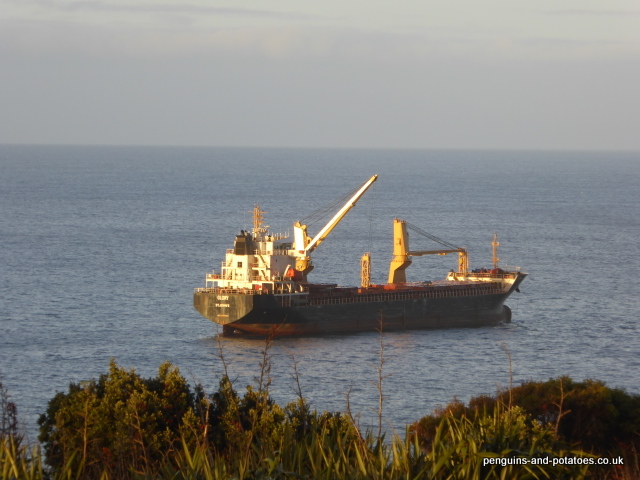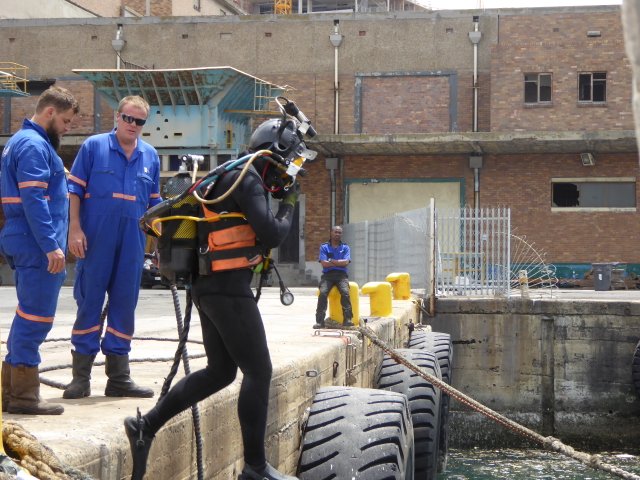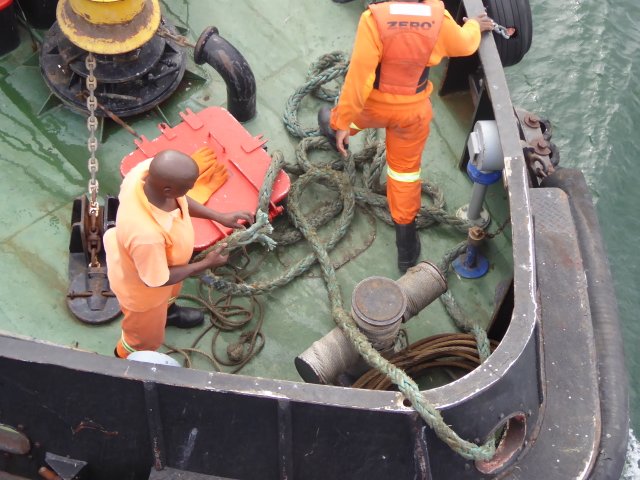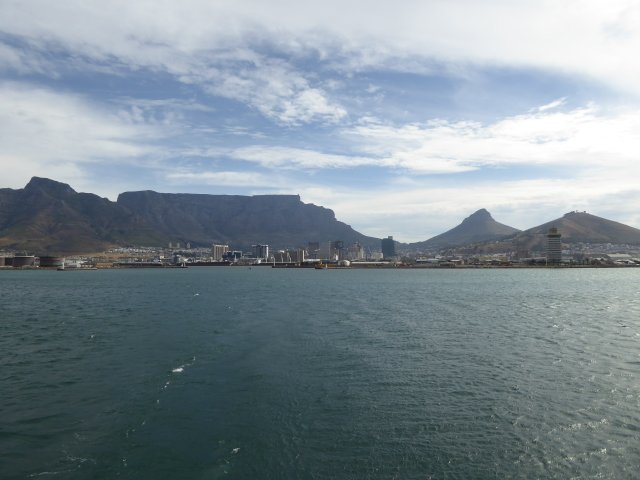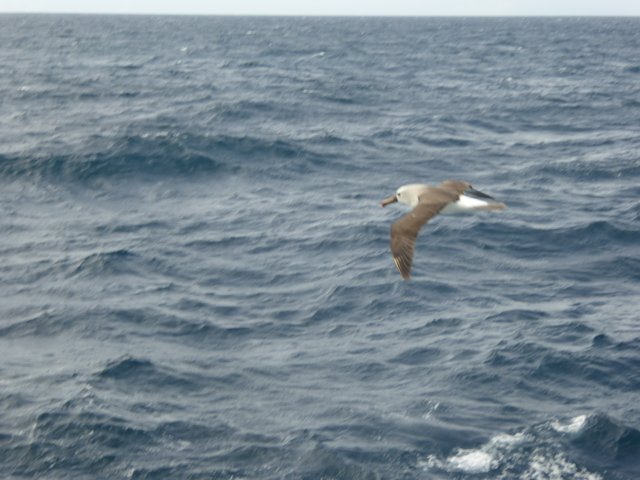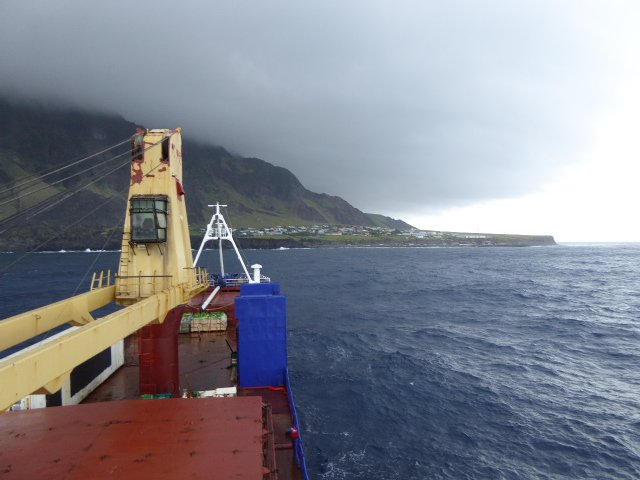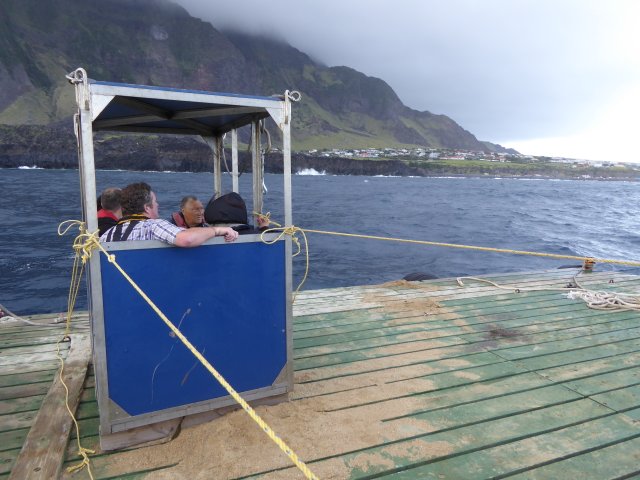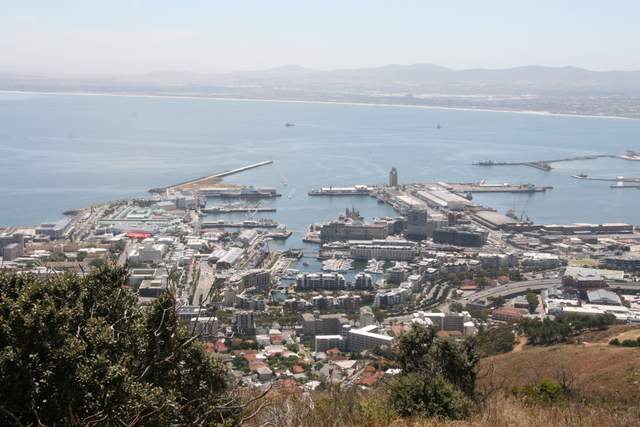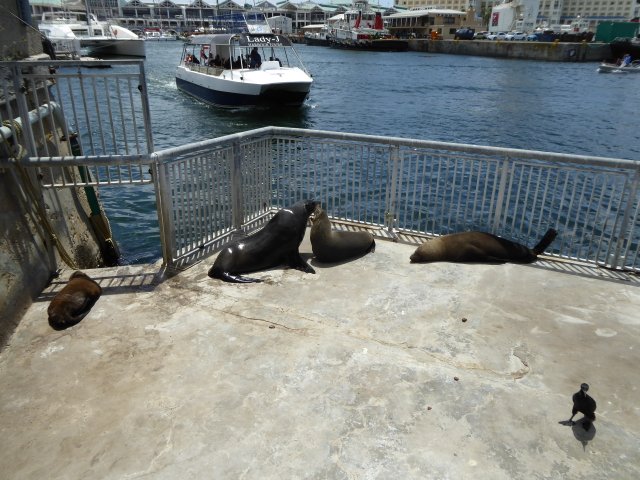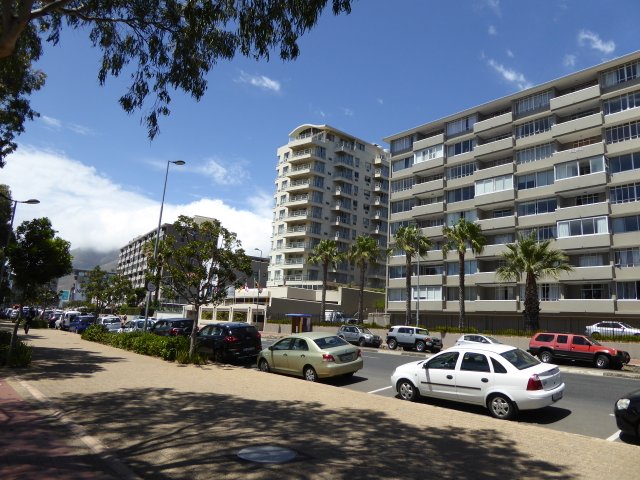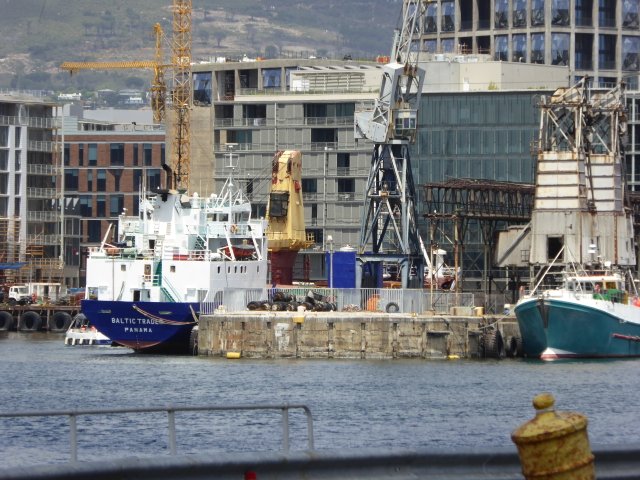We have seen at first hand how difficult things can be on Tristan da Cunha.
I am referring to shipping, and the flow of essential goods arriving and leaving the island.
Like all islands, Tristan is entirely dependent on shipping. Most inhabited islands have the benefit of a sheltered bay, a natural harbour, or otherwise some shelter for its man-made harbour. Here, a new small-boat harbour was built on an exposed storm-prone coastline in or around 1965.
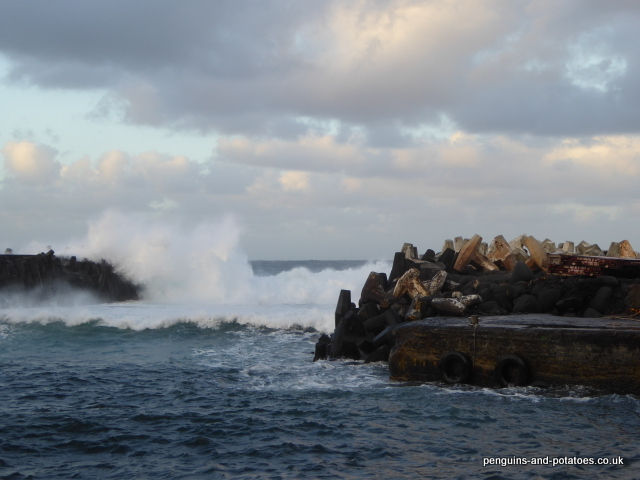
The unloading process into this tiny harbour is intrinsically difficult. Ships anchor off, about ½ mile outside the harbour, and one, two or occasionally three motorised rafts ferry the cargo from ship to harbour. Each raft needs a crew of four, and takes up to 20 tonnes of freight. Once the raft is inside the harbour and tied up, the freight is unloaded by a large crane, generally onto an awaiting tractor and trailer which shuttles the item up to where it is needed.
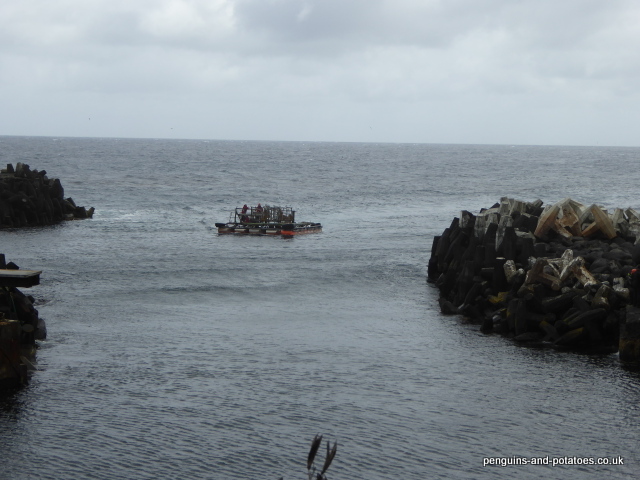
The main revenue-earning product that leaves the island is crayfish, known in some markets as Tristan Island Lobster. This provides the main revenue stream for the island, and paid employment for a large proportion of the islanders. But – and it is a big ‘but’ – this economic and monetary life-line is only as good as the harbour and the shipping links to the outside world via our nearest port of Cape Town (some 1,600 miles to the east)
In the same way, everything coming onto the island does so via this link of long shipping journeys and a harbour that is accessible only in very good weather. Machinery, building materials and other capital resources come in via this route. But also it is the only route for essential items like fruit, vegetables, flour, sugar, gas for cooking, diesel for the cars, and so on.
So – I have outlined how important the harbour is for the survival of the community here. Now let me describe the reality of how difficult it can be. We arrived on the Baltic Trader. When we arrived there were two other ships involved. The Edinburgh was elsewhere in the islands, fishing for crayfish when weather permitted and due to come back to upload stocks of crayfish from the factory here to take to Cape Town, and the Glory which was sheltering in the lee of the island. The Glory carried a ‘kit’ of construction materials for the new hospital that is being built here. She arrived here on 4th November, and started unloading before the harbour was closed due to bad weather and heavy swells. A 12-man construction team were on the island, and they only had components for the hospital to last until about December 27, after which they would be twiddling their thumbs.
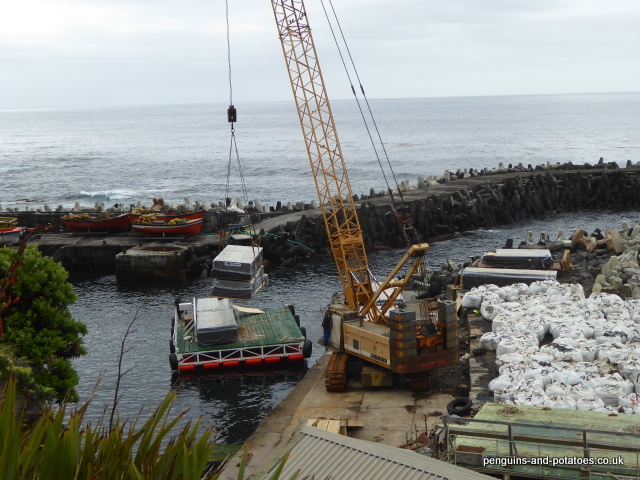
We arrived on the Baltic Trader on November 30th. After we were unloaded into the harbour, with just the hand luggage that we had in the tiny cabin on the boat, the harbour was again closed and it was seven days before conditions allowed it to open again, to resume unloading. That is when we received our suitcases, and the shop received tons and tons of food items. This little window in the weather was insufficient to finish the job, and the harbour was once again closed.
‘Unloading Day’ is a big day here. It is an ‘all hands’ day, in which all Government departments pool their resources, and all staff concentrate on the task of unloading. When there is a ship to unload, an assessment is made very early in the morning to ascertain whether unloading will be possible, looking at actual weather, up-to-date weather forecast, height and direction of swell, and so on. If an unloading day is deemed to be possible, the community is notified by the ringing of the gong at 5.30 in the morning. The gong is a suspended gas bottle, sited centrally just at the back of the pub, and twelve strikes on the gong lets everyone know what their priority is for the day – an unloading day has been declared!
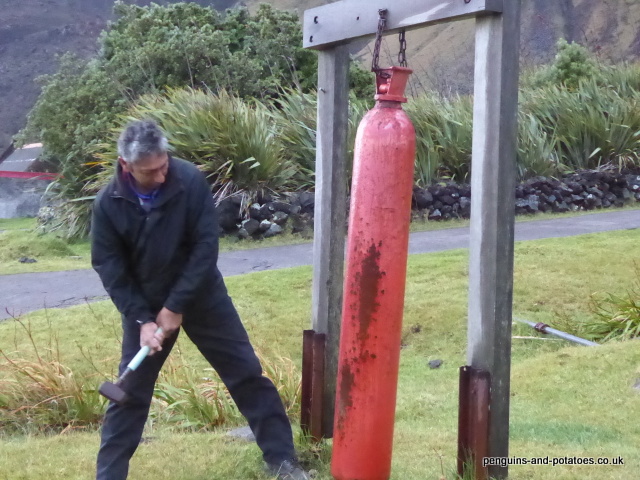
The next time that there was an unloading day, on 12th December, it was the Edinburgh that was given priority. The team were able to complete the backloading of the crawfish in the day, and the ship was able to set course for Cape Town – one less vessel in the queue!
It was not until December 22nd that the gong was again heard, and the Baltic Trader opened her hatches for unloading to continue. Two hundred tonnes of building stone for the harbour were unloaded, then there was backloading of empty 3 tonne petrol tanks, empty gas bottles, one sole passenger and 35 tonnes of frozen crawfish went on board, and the Baltic Trader left for Cape Town before weather conditions once again closed in.
Two down, one to go! On the 24th work started once again on the Glory, Christmas Day was foul and no unloading took place, but finally on Boxing Day the remaining materials for the hospital were unloaded and as darkness approached the ship was able to set course for Cape Town.
The Glory was in total 51 days at Tristan da Cunha, for a total of 11 days unloading. She was here for so long she even transferred 4 tonnes of fuel from the Baltic Trader – the only alternative of which would have been to go all the way to Cape Town simply for fuel, which in itself would have taken the best part of three weeks.
These are just some of the logistical problems of getting things done on the Remotest Inhabited Island in the World.
